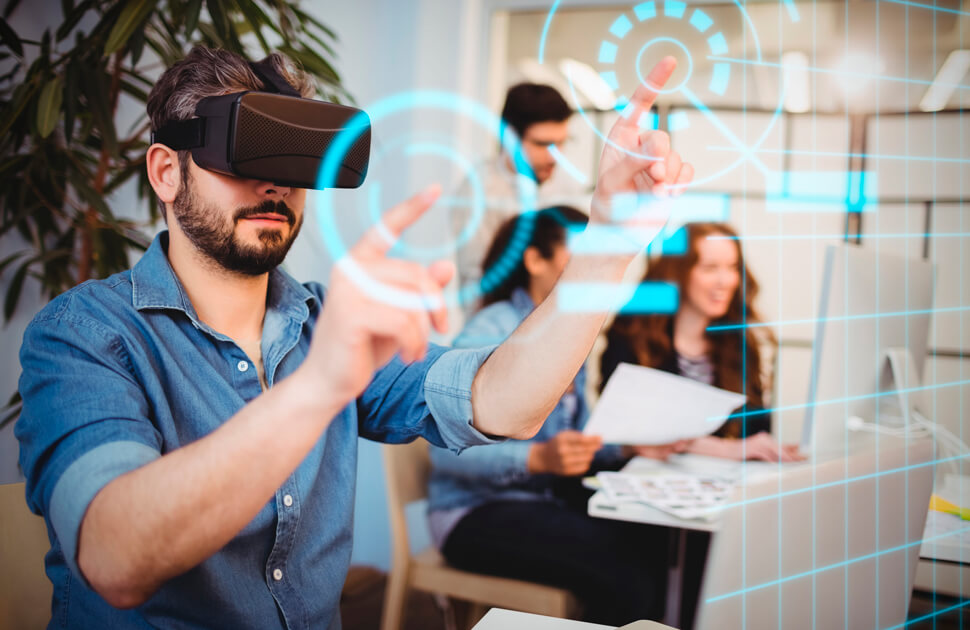The office as we know it now is constantly evolving. The cubicles of the 1980s have given way to more informal and open-plan spaces. All the changes have been combined with the development of technology: pencil and paper gave way to the typewriter and the typewriter to electronic devices such as personal computers, smart phones and tablets.
But the office of the future is something more than the physical space and the technology inside it. It covers the whole transformation of the workplace, from changes in the way employees work with innovations such as IA and IoT, to new management practices. So, how is the office changing today, and where is it going?
Four Ways In Which The Office Evolves Towards The Future
1) Changes In Office Space
Business leaders and architects have redesigned the offices over the past 150 years, shifting from long, orderly desks to divided workspaces and endless rows of cubicles. Fortunately, we have overcome that and today’s offices have returned to the open spaces, encouraging collaboration within and between teams.
Many companies have also begun to conduct hotdesking, which is an organizational system where employees without assigned locations occupy desks and workplaces. Even the desks themselves are changing to adapt to new modes of work, as companies adopt bar-style desks, mobile desks or stand-up desks.
The design of the office of the future seems to expand in these flexible arrangements, with furniture designed to reflect the new trends of agile work and even more versatile spaces. More technology will also be incorporated into furniture and walls, including screens and digital whiteboards that will be connected to workers’ devices when necessary, as well as wireless charging ports.
In addition, in the coming years we will see the growth of the smart office, where integrated IoT sensors provide data to automated systems that optimize the way office resources are used, such as heating or lighting. This could generate great energy savings for companies and help them in their CSR programs.
Companies with a vision of the future will also focus more on the welfare of employees. The table football and the game rooms do not adapt to all corporate cultures, but more plants, natural light and green spaces are beneficial for both productivity and happiness.
2) Combination Of Meeting Rooms And Social Spaces
The offices have two types of areas where workers meet: informal spaces such as the kitchen or cafeteria where conversations take place, and formal spaces, such as meeting rooms and boardrooms.
Today’s offices are erasing the line between the two, designating some areas as informal teamwork or meeting spaces. In the future, there will be more social spaces designed specifically to encourage interaction among employees. The companies will also look for more ways to bring remote workers together with their office colleagues.
3) Implementation Of New Technologies
Changes are taking place as companies move away from desktops to laptops, offering employees communication, information and productivity tools wherever they are.
More developments are also expected in office computing, with more processing power integrated into the office environment and more services that depend on speech, voice and facial recognition. We will also see workers in each industry using more cognitive or intelligent systems, obtaining relevant information from the company’s data and learning what we need and want to do the job. That is a change that will require more reconfigurations in the office, or new ways for human workers and their new AI co-workers to interact.
On the other hand, it is likely that the lines between the virtual and the physical begin to merge in the workplace. Virtual reality (VR) and augmented reality (AR) technologies are already changing the way visualization, marketing, training, design and other functions are carried out. One study estimates that by 2020, virtual reality will cut costs by half in terms of corporate training, and 15% of all technicians will use augmented reality technology in some way.
4) Evolution in infrastructure and services
The development of the office brought with it a massive growth in paperwork and bureaucracy, and the need for infrastructure to support it. The shift to digital technologies and PCs during the 1980s and 1990s transformed the way companies handled data, with client / server architectures and the network that allows companies to store and share information more effectively.
In recent years, this has changed again, as cloud-based services eliminate the restrictions that link information to a specific location or device. Information now flows from one device to another and from one place to another, limited only by access rights and security provisions.
The growth of the cloud and hybrid cloud services are not diminishing in the short term, with more Business Intelligence tools and smart personal assistants that not only find data when requested, but adopt a more proactive approach and drive relevant information that can help organizations. In the meantime, collaboration services and applications will change the way we work together, so that workflows run smoothly, whether in the office, working from home or on the move.
 Subscribe
Subscribe
 Ask for a demo
Ask for a demo

 4 min
4 min
